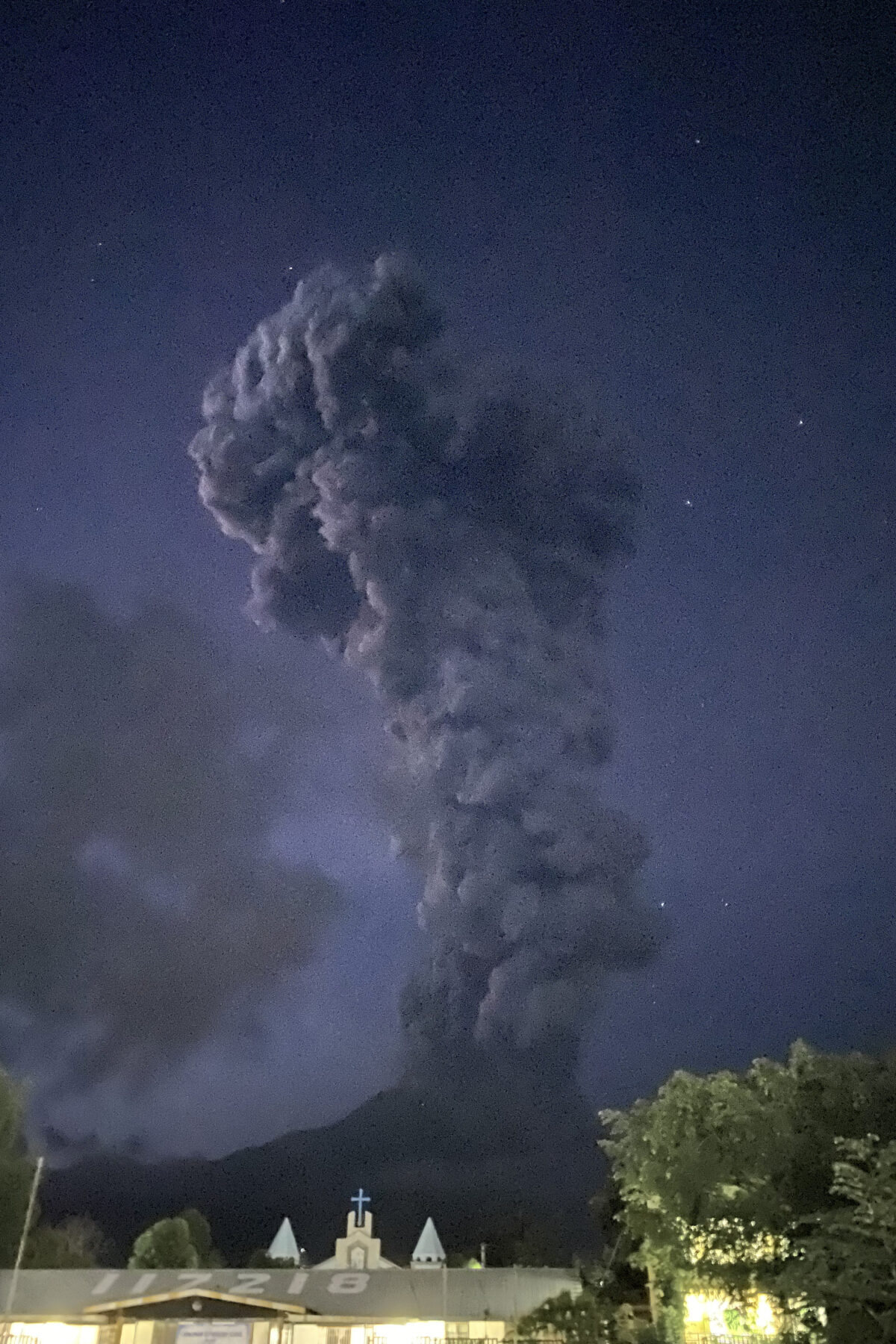
This handout photo courtesy of Dollet Demaflies shows Mt. Kanlaon, also known as Kanlaon Volcano, spewing a large plume of ash during an eruption as seen from La Castellana town, Negros Occidental, in central Philippines on June 3, 2024. The alert level for the Philippine volcano was raised on June 3 after an “explosive eruption” sent a plume of ash, gas and steam five kilometers (three miles) into the sky, the volcanology agency said. (Photo by Handout / Courtesy of Dollet Demaflies / AFP)
MANILA, Philippines — Mt. Kanlaon registered fewer volcanic earthquakes and sulfur dioxide flux in the past 24 hours, the Philippine Institute of Volcanology and Seismology (Phivolcs) said Monday.
From midnight on Sunday, June 9, to midnight on Monday, June 10, Phivolcs said Kanlaon had six volcanic quakes, lower than the 17 tremors logged 24 hours prior.
State volcanologists also said that from midnight on Sunday to midnight on Monday, Kanlaon emitted 3,304 metric tons of sulfur dioxide, which was also lower than 4,397 metric tons during the previous monitoring period.
Phivolcs nevertheless said Mt. Kanlaon or Kanlaon Volcano stays under Alert Level 2 since it still shows “increased unrest” despite the fewer volcanic earthquakes and sulfur dioxide flux in the past 24 hours.
READ: Kanlaon Volcano blast ruins crops, taints water
The volcano’s eruption and the consequent lahar flow due to the rain have now resulted in significant losses in Negros Island’s agriculture and contaminated water sources in the province, according to local officials.
In Negros Occidental province, damage to crops reached P9.99 million as of June 7 since the blast affected farms in the cities of Bago and La Carlota and the towns of La Castellana, Moises Padilla, and Pontevedra.
Farmers estimated that losses in high-value commercial crops were at P8.5 million; rice, P1.36 million; and corn, P122,250.
Also affected were farmlands in Canlaon City—considered the “vegetable basket of the Visayas”—in N Negros Oriental.